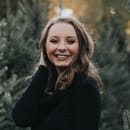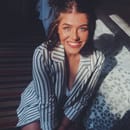On my first day of high school, in 2015, I looked around the halls at the older girls and observed them. Who they were with, what they were doing, and most of all, what they looked like, and I compared myself to them. Not only at school, but on social media as well. And while scrolling through their feed and coming upon their vacation pictures, I noticed one commonality between every popular girl I came across: they all had boobs. And I looked at my own fourteen-year-old chest, as flat as the phone screen before me, and felt incredibly insecure. And that insecurity followed me like a shadow for the rest of my high school experience; when I tried on homecoming dresses for the first time and could not fill out the cup; when I went to the beach two summers later and wore my size small bikini top; when other girls would discuss guys staring at their cleavage, and I could not relate. Although trivial, my insecurity weighed on me like a heavy backpack, starting out manageable but, after some time, making it very difficult to keep walking.
Around my junior year, I downloaded Twitter and started seeing more and more tweets about body positivity, and while I enjoyed the concept of loving one’s body for what it is, the movement pushed me further and further into this cup-size insecurity. I thought of a line from Meghan Trainor’s “All About That Bass” that referred to boys liking curvy girls instead of stick-thin ones, and I felt isolated in my insecurity. While I loved that society was making moves towards acceptance of everybody’s differing bodies, none of the newly-acceptable bodies was anything like mine. Until I started researching the Free the Nipple campaign and watching celebrities post nearly-nude pictures of their own bodies and noticing that, not only were they unalike, but they didn’t all have perfect Megan Fox-style breasts- some of them were smaller and perkier, and similar to mine. For the very first time, I felt validated when I put on my B-cup bra and donned a tight t-shirt, not caring what it did or didn’t draw attention to. I felt free.
The Free the Nipple campaign aims to erase the censorship of women’s bodies and take notice of the fact that women’s breasts are not just sexual objects meant to be stared at. The Free the Nipple campaign is not about burning bras- it is about denouncing the idea that women are inherently more sexual than men, that women’s bodies have to look a certain way, and that our bodies are for comparing. It is okay that some women have large breasts, just as it is okay that I have smaller ones, and even as I have gotten older and filled out more, I hold onto the knowledge that my body is not for comparing, it is for loving, and that I am so much more than a letter on my bra- I am a person, and for that alone, I am beautiful.



